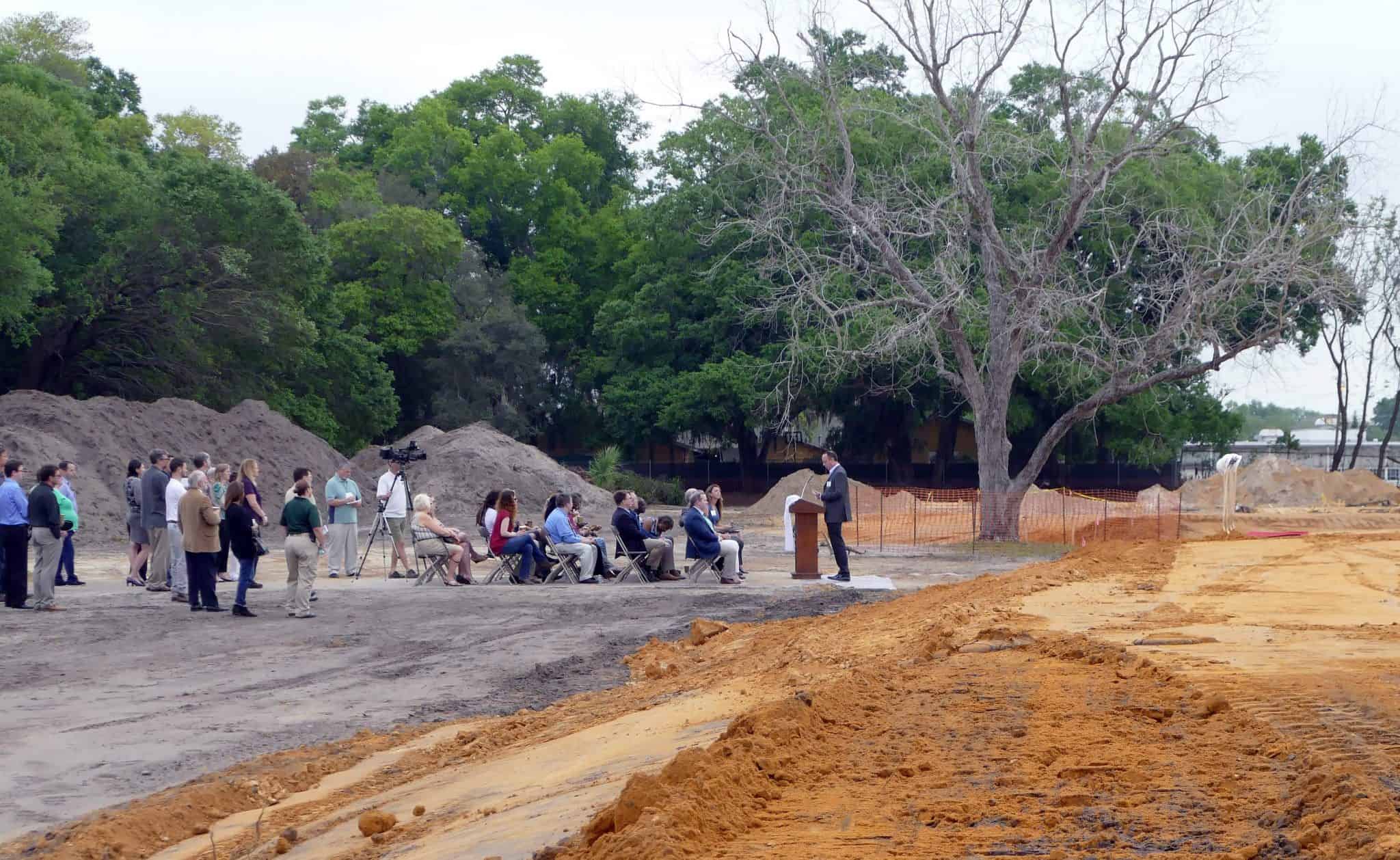Over the past 64 years, the Edmund Gaines Graham Home in the center of east Tampa has sheltered the elderly and infirmed. Now, the remnants from the building lie in piles of rubble on the east end of the property, shoved aside to help make way for the future: a 90-unit apartment complex which will continue the tradition of housing the poor and disadvantaged, and from now on, the homeless.
Future apartment complex will shelter the homeless

The project, spearheaded by Gracepoint, which is headquartered just to the west of the construction site on Henry Avenue just east of 22nd Street, will offer half of the permanent housing units to the homeless. The other half will be inhabited by Gracepoint clients made up of elderly or people with mental and behavioral issues.
The project, funded with federal money funneled through the state, will cost about $18 million to build and take a little more than a year to finish. There will be 90 units of affordable housing with at least 45 units of permanent housing reserved for homeless individuals.
Everyone who lives there will have accessibility to fully integrated medical and mental-health care, substance treatment services, pharmacy and on-site social services, all offered through Gracepoint.
Ground breaking for the project was held Friday morning adjacent to a huge leafless pecan tree that has yet to come out from under its winter sleep.
“The efforts to help the homeless in this community are so much better now than they used to be,” said Guy King, chairman of the board of directors of Gracepoint.
The push to house the homeless before securing services for them began not too long ago and is being hailed by homeless advocates as being the key reason the number of people living on the street has dwindled over the last few years.
It’s important for a person to have a home address, advocates say, before receiving services and possibly training to land employment. A house, they say, anchors people and provides them self respect and keeps them safe at night.
It also keeps quite a few from landing in jail and court on vagrancy or trespassing charges or in the hospital where taxpayers pay the costs of indigent care.
A few years ago, Gracepoint opened Cypress Landing in north Tampa. It was a run-down apartment building that was renovated to provide housing for 17 chronically homeless people. That facility has saved the general public $400,000 a year in hospital, jail, court costs and other services typically picked up by taxpayers, according to a University of Tampa study released this past year.
Joe Rutherford, CEO of Gracepoint, said the newest project, called The Graham at Gracepoint, sits on a site of some historical significance.
“It’s a great story,” he said. “Mrs. Graham died in 1938 and left money for a home for the elderly, to be paid for out of the Graham Trust.” That totaled about $300,000 at the time.
It took more than a decade before the funds were released to build an apartment building to house up to 28 elderly residents. But through the years, the trust dwindled and ultimately, trustees approached Gracepoint, then known as Mental Health Care, to take over the management of the building. In 1992, that happened.
Rutherford said eventually, running the home depleted the trust by about $50,000 annually. Last year, Rutherford said, trustees approached Gracepoint to turn the operation over entirely, including management and the land, asking that the facility remain open for at least 5 years.
“We were hoping for 10,” Rutherford said.
Then, Gracepoint began looking at upgrading the facility and landed a much-sought-after, low income housing tax credit and the funding was secured.
The plans call for a 90-unit, three-story facility. Rent for the homeless residents will be paid for through U.S. Housing and Urban Development vouchers.